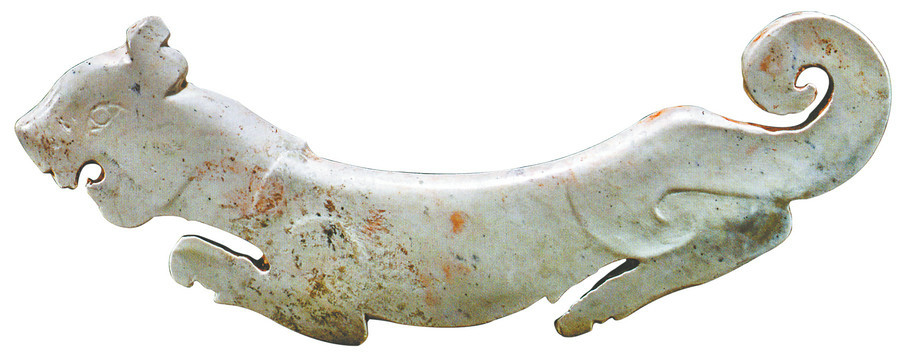

Up until now, four pieces of jade yazhang have been unearthed at Erlitou, an archaeological site in Central China's Henan province. The site is long deemed to be the one-time capital of Xia, a Bronze Age culture that existed in the Yellow River region, from where its influence rippled outward in all directions, across the entire land of modern-day China and beyond.
"From the Yellow River Basin to the Yangtze River Basin and then the Pearl River Basin in southern China and continental Southeast Asia including Vietnam, the jade zhang has proven as effective a traveler as other types of ritual jade, most notably cong and bi," says Zuo.
Between them, China was coming together fast. Xia, whose ancestors migrated to the Yellow River valley from northwestern China, was followed by the dynasty of Shang, founded by people hailing from the country's northeast.
When Shang eventually met its end in the 11th century BC, it was overthrown by the founders of Zhou who entered the spotlight of history from roughly the same area as the ancestors of Xia, that is, the upper and middle reaches from the Yellow River in northwestern China.
"One remarkable aspect of the rule of Zhou was that it reaffirmed the role of ritual jades in ceremonies considered essential to the well-being of a country, and that it did so in a way that had taken into full account the history of the various jade cultures that had been accumulating up to that point," says Teng.
According to Zuo Zhuan (The Commentary of Zuo), an ancient Chinese narrative history authored by a man named Zuo Qiuming in around the 5th century BC, Yu, the legendary first ruler of the Xia Dynasty who is known for his flood-control efforts, once convened a meeting of various tribal leaders, each holding "jades and silks" as tokens to be exchanged.
Those who doubt whether jade had a role to play in an occasion like this one only need to look at some jade plaques dated to around the 5th century BC that have been unearthed from Houma, Shanxi province in northern China.
The words written on their surface in minced cinnabar turned out to be the content of a covenant, into which all attending parties had entered.
In another book credited to Zuo Qiuming, a vassal king who lived around the same time was told by his trusted counselor that silk and jade should be offered to heaven since they, emanating the same soft shine, were "the essence of the cosmos". The fact that this man, who went by the name Guan She Fu, was a statesman as well as a theologian, speaks about the prominence of jade in the overlapping worlds of politics and religion in China before the Common Era.
In the following centuries, as silk, exported to the rest of the world, came to represent China for those dwelling in faraway lands, jade continued its hold on the imagination of the Chinese, who never stopped pondering and reflecting on the relationship between man and nature.